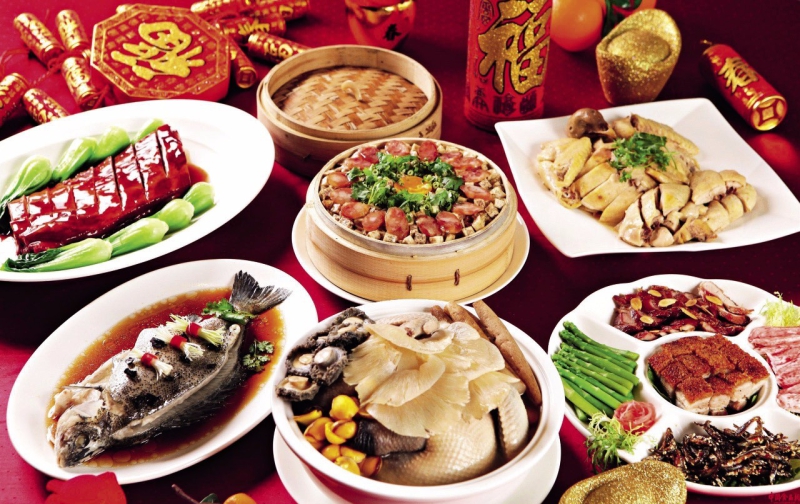
Just prior to the Spring Festival, China’s traditional New Year celebrations, hundreds of millions of Chinese people embark on the journey from their places of work and residence back to their hometowns, loaded with simple personal belongings but large packages of gifts, taking every means of transportation available to get together for a family reunion dinner. However, what to eat and how to cook takes the second place to the most important goal of having a meal with family members and loved ones.
The preparation for this big meal actually starts from the late 12th month of the lunar year, with the whole family participating. A bowl of rice is a must on that occasion. As time goes by, long-grained non-glutinous rice has been replaced by polished round-grained rice, which is more fragrant and tasty since it’s no longer the rice of preceding years. In my childhood, my father bought rice from a grain distribution center and then my mother swept them into a bamboo dustpan to shake and skim out rice residues which would be used later for cooking porridge. Finally, when the handpicked plump-eared rice was ready and put on the table, kids knew it was time to welcome a new year.
Usually, chunks of pork were placed in a steaming wooden basin while my mother removed the pig’s hair swiftly with a tweezer. Father went back and forth between the stove and chopping board, making various shaped wheaten foods on the board, which were soon cooked into sweet glutinous rice strips and salty fried sesame crackers. Grasping a bowl of rice and a dime in each hand, kids delightedly ran onto the street to find a popcorn peddler and crouched beside his magic machine, waiting for a loud “bang” which meant the highly-anticipated puffed rice would flow out. Some families set up a stove with an iron pot on, and added in some sand. When the firewood burnt out and sand was simmering hot, the host would stir fry peanuts with the residual heat in the pot.
Puffed rice and peanut kernels were then made into dim sum, by using sweet potato syrup blended with lard and osmanthus. Laying puffed rice and peanut kernels evenly on a kneading board, pouring on some syrup, and then rolling it up and then cut into slices. The cooled crispy dessert was children’s favorite.
A family reunion dinner often encompasses Chinese people’s greetings and good expectations: Fish implies an abundant year, sausage means longevity, meatball refers to unity and happiness, lettuce is a homophone of plentiful treasures, and dried beancurd sticks connote an affluent life.
A country with a vast territory is often home to a wide variety of dining customs. For example, northern Chinese are used to eating dumplings on the Chinese New Year’s Eve. Plates of silver-ingot-shaped snowy-white dumplings symbolize “a New Year harvest with ingots rolling in.” The southerners, however, prefer to eat the sticky rice cake, which means getting promotions year by year.
Pork hock in brown sauce is always a part of the New Year’ Eve dinner in Beijing. Some buy it from time-honored restaurants including Tianfuhao, Yueshengzhai, Meizhou Dongpo; whereas many local Beijingers would rather cook the dish themselves at home and invite their relatives and friends to savor their craftsmanship. Locals in Hong Kong have a custom to eat a banquet with a big pot of vegetables and meats. Already cooked vegetable and meat dishes are placed into a pot layer by layer, and then the pot is heated on the stove with the whole family sitting around to enjoy the delicacy, praying for a prosperous and happy New Year. A heartwarming and touching reunion indeed!